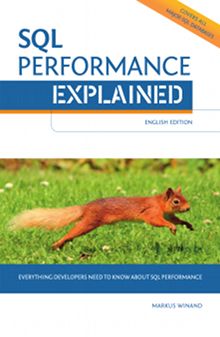The filter clause extends aggregate functions (sum, avg, count, …) by an additional where clause. The result of the aggregate is built from only the rows that satisfy the additional where clause too.
Syntax
The filter clause follows an aggregate function:
SUM(<expression>) FILTER(WHERE <condition>)With the exception of subqueries, window functions and outer references, the <condition> may contain any expression that is allowed in regular where clauses.0
The filter clause works for any aggregate function: besides the well-known functions such as sum and count, it also works for array_agg and ordered set functions (e.g., listagg).
If an aggregate function is used as a window function (over clause), the syntactic order is: aggregate function, filter clause, over clause:
SUM(...) FILTER(WHERE ...) OVER (...)However, the filter clause is not generally allowed before over rather, it is only allowed after an aggregate function, but not after other window functions—it is not allowed with ranking functions (rank, dense_rank, etc.) for example.
Use Cases
The following articles describe common use cases of filter:
Pivot—Rows to Columns —
filterin theselectclauseMore to come: Subscribe to the newsletter!
Compatibility
SQL:2003 introduced the filter clause as part of the optional feature “Advanced OLAP operations” (T612). It is barely supported today, but is easy to emulate using case (see Conforming Alternatives).
Conforming Alternatives
Generally, the filter clause can be implemented using a case expression inside the aggregate function: the filter condition has to be put into the when-clause, the value to be aggregated into the then clause. Because aggregate functions generally skip over null values,1 the implicit else null clause is enough to ignore non-matching rows. The following two expressions are equivalent:
SUM(<expression>) FILTER(WHERE <condition>)SUM(CASE WHEN <condition> THEN <expression> END)Count(*) needs some special treatment because “*” cannot be put into the then clause. Instead, it is enough to use a non-null constant value. This ensures that every matching row is counted. The implicit else null clause maps non-matching rows to null, which is ignored by count too.
COUNT(*) FILTER (WHERE <condition>)COUNT(CASE WHEN <condition> THEN 1 END)When using a set quantifier (distinct or all) it must remain in the aggregate function prior the case expression.
If you like this page, you might also like …
… to subscribe my mailing lists, get free stickers, buy my book or join a training.
Proprietary Extensions
PostgreSQL: Subqueries Allowed
The PostgreSQL database supports subqueries inside the filter clause (e.g., via exists).
Proprietary Alternatives
As the above described alternative with the case expression is very widely supported I recommend using that approach rather than the proprietary alternatives offered by some products.
Countif (Google BigQuery)
Google BigQuery offers the aggregate function countif similar to Microsoft Excel.
COUNTIF(<condition>) [OVER(…)]The same result can be obtained with the case approach, which is very widely supported.
COUNT(CASE WHEN <condition> THEN 1 END) [OVER(…)]
